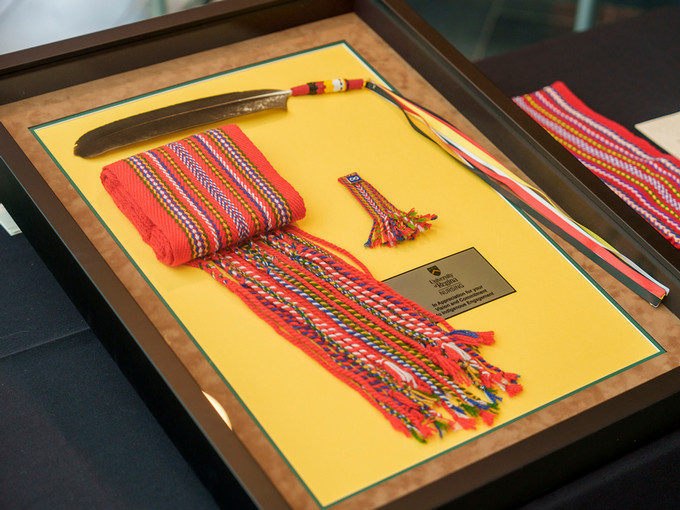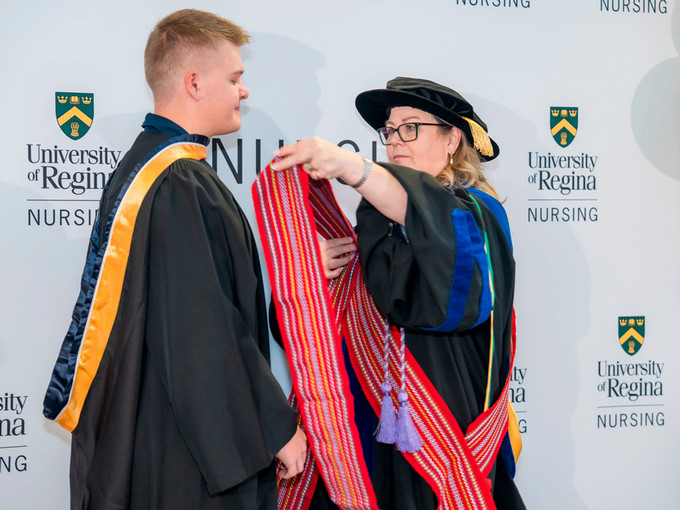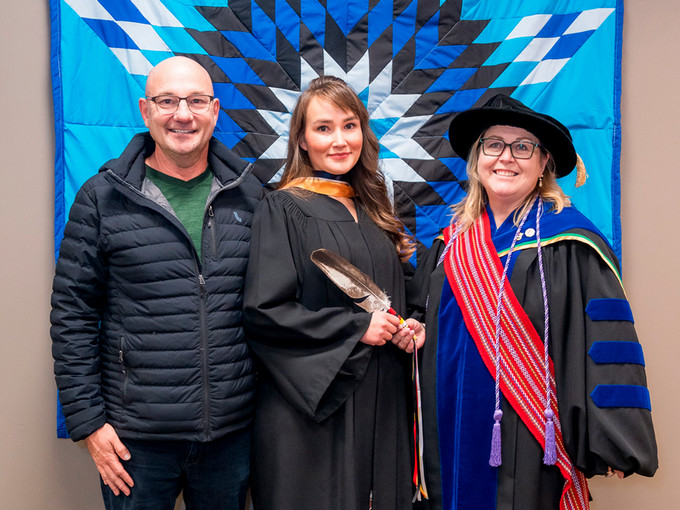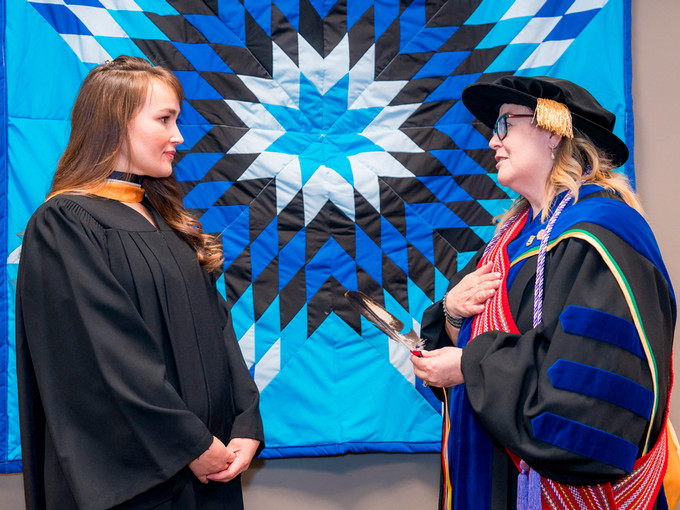Feather and Sash
Celebrating Indigenous Learners
Both the feather and Métis sash hold profound cultural, spiritual, and historical significance within Indigenous communities. They serve as powerful symbols that connect individuals to their heritage, ancestors, and the values that are cherished within their cultures.In celebration of the accomplishments of our Indigenous learners, acts of bravery, or by making significant contributions to the community, the Faculty of Nursing offers a gift of either an Eagle Feather or a Métis sash, to each Indigenous graduand. We, the Faculty of Nursing students, faculty and staff are all on a healing journey due to colonial impacts. Some are more connected to their culture than others, and some may come to university to stay culturally connected. For others the university may be the only tie to their culture. Measures of success aren’t just based on grades. Success can be related to kinship, language, culture, knowledge, community, perseverance, etc. We are proud to be able to acknowledge and honour our Indigenous graduates with a feather or a sash.

Eagle Feather
In many Indigenous cultures, a feather is a powerful symbol signifying the connection between owner, the creator, and the bird from which the feather came. Feathers generally symbolize trust, honor, strength, wisdom, power, and freedom. A feather is believed to carry the bird’s energy and is a gift from the sky and creator. The Eagle is one of most sacred of birds because the Eagle carries prayers to the Creator and is therefore heard. Feathers are displayed with dignity and pride, and need to be handled with great regard as they are very sacred to many Indigenous peoples.The feathers, presented by the Faculty of Nursing, are created by Jonathan S. Fisher, an Indigenous artisan born in Lestock, Saskatchewan. He currently resides on George Gordon First Nation with his wife Darlene of 26+ years. Jonathan learned his talent by refurbishing headdresses and is a self-taught bead worker. All the feathers are blessed with sage by Darlene Fisher. When presenting the feathers to the Faculty of Nursing, the Fishers ensure that blessings are sent to the creator prior, for each individual feather. Before being presented to graduands, Indigenous staff and faculty are caretakers to these sacred items.

Métis Sash
The Métis, or L’Assomption Sash is an important symbol of Métis cultural identity. The presentation of a sash is considered a great honor. The sash has historical roots in the fur trade era, and became a symbol of Métis resistance and cultural pride during pivotal historical events like the Red River Resistance. The sash is a unifying symbol for the Métis people, representing their shared history, culture, and struggles. It is a visual reminder of their resilience and determination in the face of historical challenges.
Interpretations of sash colors can vary, and individual weavers or communities may have their own specific meanings or variations. Red is often representative of the blood shed by the Métis while fighting for our rights. Blue is for the depth of our spirits. Green is for the fertility of a great nation. White is for our connection to the earth and our creator. Yellow is for the prospect of prosperity. Black is for the dark period, the suppression and dispossession of the Métis lands. The overall design and pattern of the sash can also convey additional mean¬ings and tell specific stories related to Métis history and culture.
The Sash is worn with pride by Métis individuals as a representation of their distinct heritage. Today, the traditional guidelines for wearing the sash vary among Métis communities.
The Michif words for sash is  la sayncheur flayshii. In French, a Métis sash can be called “un ‘ceinture flechée’”, literally “an arrowed belt”. The arrow design can be seen in the weaving.



